Introduction and features
Leica has a reputation for building high quality cameras and lenses, and strictly speaking it was the first company to introduce mirrorless digital system cameras, because all its M models are rangefinders – which don’t have reflex mirrors.
However, it wasn’t until the Leica T (Typ 701) was introduced in April 2014 that the company had what many would consider a modern mirrorless or compact system camera (CSC). While the T follows Leica’s minimal design ethic, many were surprised by its low button count and the heavy dependance on the touchscreen for making settings selections. This seemed a major departure for a company that tends to make cameras with traditional controls.
Now we have a second mirrorless system camera, the SL (Typ 106), and instead of the APS-C format sensor of the T, inside is a full-frame CMOS device with 24 million effective pixels. What’s surprising is that the new camera has the same lens mount as the T. This means that the existing T lenses are directly compatible, but because they are only designed to cover an APS-C sized sensor, mounting one sets the SL to APS-C crop mode and it produces 10Mp images. It’s like mounting a Nikon DX lens on an FX camera.
Leica already has an adaptor that allows M-mount optics to be used on the SL, but there will be new ones to enable Leica S, R and Cine lenses to be used.
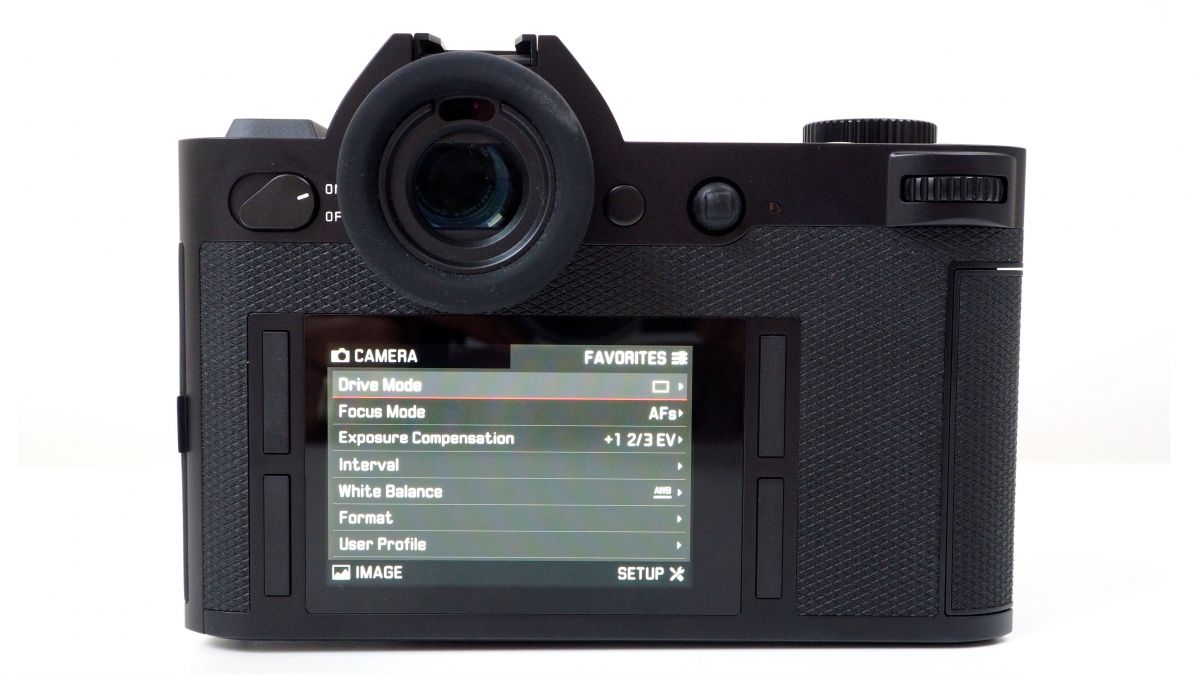
Leica is rebranding the ‘T mount’ the ‘L mount’ and lenses that are compatible with the T will be labelled TL, while full-frame lenses will be badged SL. It’s also possible to mount SL lenses on the T. Clearly this move was planned long before the SL’s announcement, so it seems a little odd that the rebranding is necessary.
The Leica T doesn’t have a viewfinder built in and unless you invest in the optional external unit images must be composed on the rear screen. When the Leica Q (the company’s full-frame compact camera) was unveiled, Leica showed how good an electronic viewfinder can be. The viewfinder in the SL has an even more impressive specification; it’s a 0.66-inch unit that has 4.4-million dots (the Q’s has 3.68 million) and a magnification of 0.8x (the Sony A7R II and Sony A7S II viewfinders are 0.5-inch devices with 2,359,296 dots and 0.78x magnification).
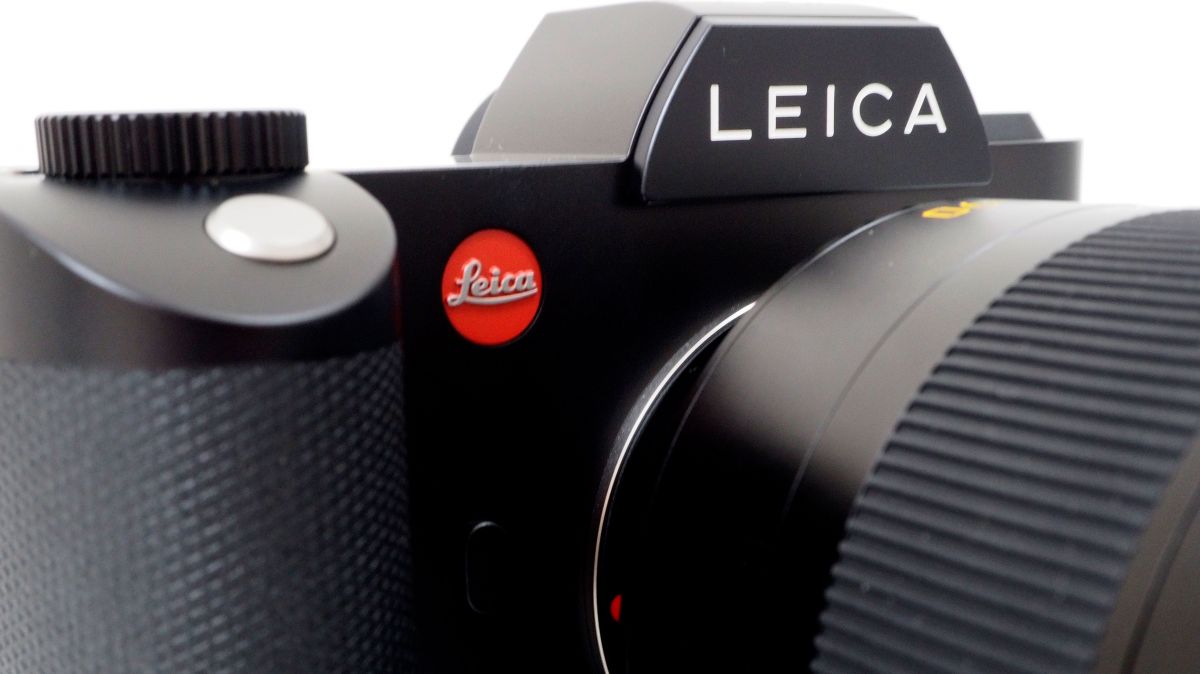
If the idea of a ‘serious’ Leica camera with an electronic viewfinder (EVF) has you choking on your tea, I probably shouldn’t mention that it has a 2.95-inch screen with 1.04million dots that’s touch-sensitive. But it does.
Naturally both the screen and the EVF can display the live view image with exposure simulation as well as focusing peaking, clipping/zebras and a level.
Leica has coupled the SL’s sensor with a Maestro II processing engine – the same as is used in the medium format Leica S (Typ 007). This means it’s capable of handling large files and as a result the SL can shoot at up to 11fps (frames per second) with the 2GB buffer enabling 33 DNG or 30 simultaneous JPEG and DNG file bursts. In addition, 4K video can be recorded in MP4 or Mov format at 30fps. Lower resolution video can also be recorded and there’s a maximum frame rate of 120fps at Full HD for 4x slow motion playback.
Images are saved to SD type media. There are two card slots with one being compatible with UHS II and the other UHS I. An HDMI port also enables videos to be recorded externally. When 4K footage is output over HDMI 1.4 it’s recorded in 4:2:2 10-bit format; this drops to 4:2:0 8-bit format when recording internally.

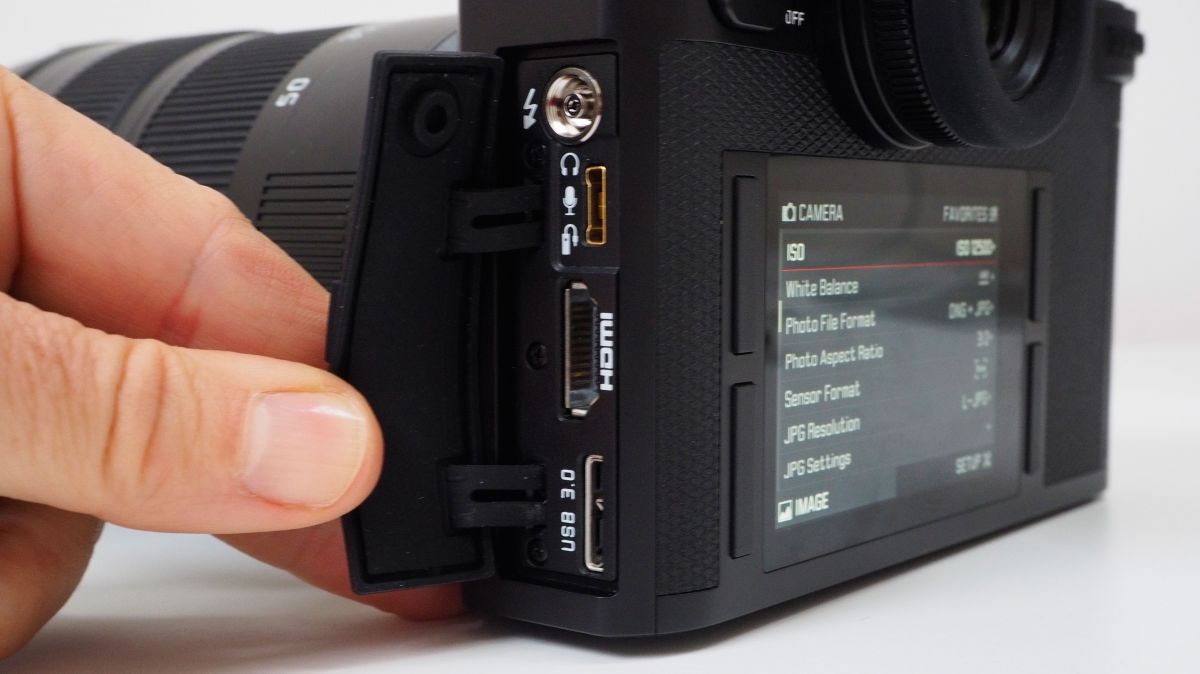
As you would expect with a professional-level camera, there are program, shutter priority, aperture priority and manual exposure modes and no automatic scene modes. It’s possible to tailor the look of JPEGs with contrast, saturation and sharpness adjustments while videographers can make use of the V-Log L gamma option to produce flat footage that’s intended for grading.
Like all respectable modern compact system cameras, there’s Wi-Fi connectivity built in and the new free Leica SL app that’s available for iOS and Android enables a smartphone to be used for remote control and image sharing. GPS technology is also built in for image tagging.
Build and handling
Leica prides itself in the quality of the build of its cameras and the SL exemplifies the company’s craftmanship. The bodyshell is milled from two blocks of aluminium, the first for the front, top, bottom and sides and the second for the back. It gives the camera a very solid feel and there are seals around the joints and controls to make it dust- and splash-proof.
Appearance-wise the SL looks more SLR than rangefinder, having a pentaprism-like lump on top where the electronic viewfinder is located. A good sized grip on the front adds to the SLR-like appearance.
Although well-sized, the grip could do with having a more ergonomic shape to make it feel more secure in your hand. This is especially true when a weighty lens like the Leica Vario-Elmarit-SL 24–90 mm f/2.8–4 ASPH is mounted as the camera becomes very front-heavy.
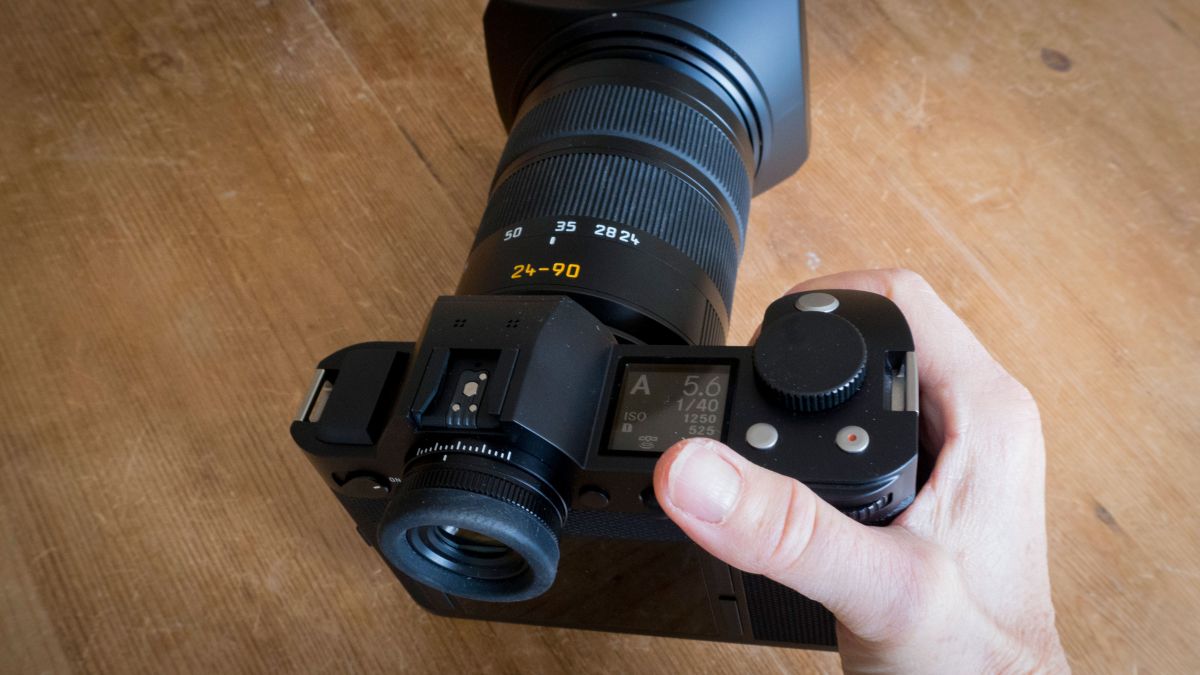
Leica has used a similar control arrangement on the SL to the one it has adopted for the S (Type 007) – its latest medium format camera. For example, there’s a large unmarked dial on the top of the camera that’s used for adjusting shutter speed and a monochrome LCD that shows key settings. Just above the thumbrest on the back of the camera is a dial that can be depressed to change what it’s used for, but by default is used to adjust aperture and scroll through settings in the menu.
In addition, there are four long buttons at the sides of the screen on the back of the camera and their function changes depending upon whether you use a short or long press. It’s also possible to customise their function to reach the options you use most often.
By default, pressing the button to the top left of the screen brings up the menu screen. The other three buttons can then be used to access your stored menu Favourites, the image parameters (sensitivity and white balance) etc, and the Set-up menu. It speeds up navigating the menu. A long press of the top left button reveals the sensitivity options and this can be adjusted either using a finger on the touchscreen or either the mini-joystick controller or the dial above the thumbrest.
While the short and long pressing on buttons makes good economic use of the controls, it takes a little getting used to and this could be an issue for anyone swapping between different camera models on a regular basis – unless they’re swapping to a Leica S of course.
There’s a button on the top of the camera that’s used for switching between stills and video mode and accessing exposure compensation. I found this very awkward to reach and set the bottom right button near the screen to access this key feature.
Like the S, when the SL is in manual focus mode and shutter release is depressed halfway, the top LCD indicates the distance to the focus point as well as the back and front focus points, which could be very useful all sorts of photography, but especially landscapes.
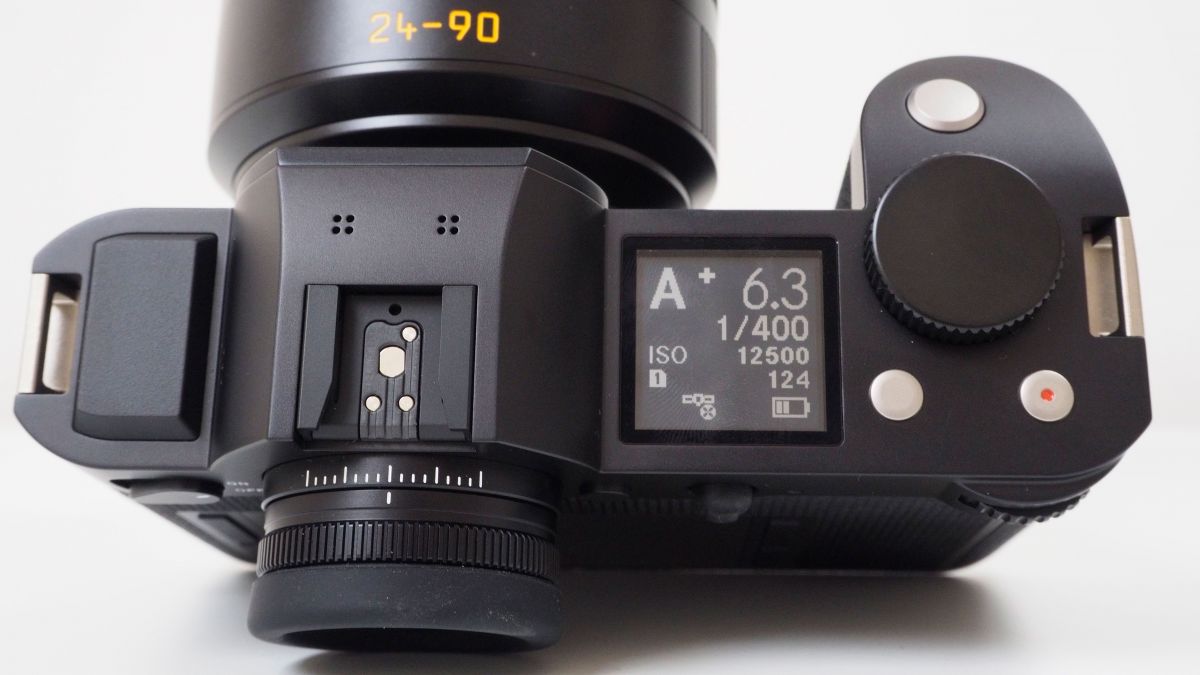
I really liked the Q’s viewfinder when I tested it and I need to use the one in the SL a bit more and in a wider range of conditions than I have so far, but my first impressions are that it is superb. It’s smooth, responsive and clear.
Similarly, the main screen seems very good, showing lots of detail and responding to a touch quickly. However, I think Leica could have made more use of the touch control and made it possible to navigate the menu with swipes and taps on the screen. Nevertheless, I love how quickly the screen zooms into an image following a double tap.
Performance
The SL is capable of resolving the level of detail that we expect from a high quality 24Mp sensor. In an effort to produce more natural, detail-rich images, Leica typically allows a bit more noise to be seen than other manufacturers, however from ISO 400 to 12,500, the SL’s signal to noise ratio is a little better than that of the Sony Alpha 7 II. Raw file dynamic range also compares favourably at most sensitivity settings.
It’s also clear from the SL’s high sensitivity images that it doesn’t apply a heavy noise reduction treatment. Although there’s not masses of chroma noise, there’s quite a bit of luminance noise visible in high sensitivity JPEGs at 100%. The simultaneously captured raw files (conveniently they’re in DNG format) look a little crisper, but the JPEGs don’t have the heavy smoothing that we sometimes see.
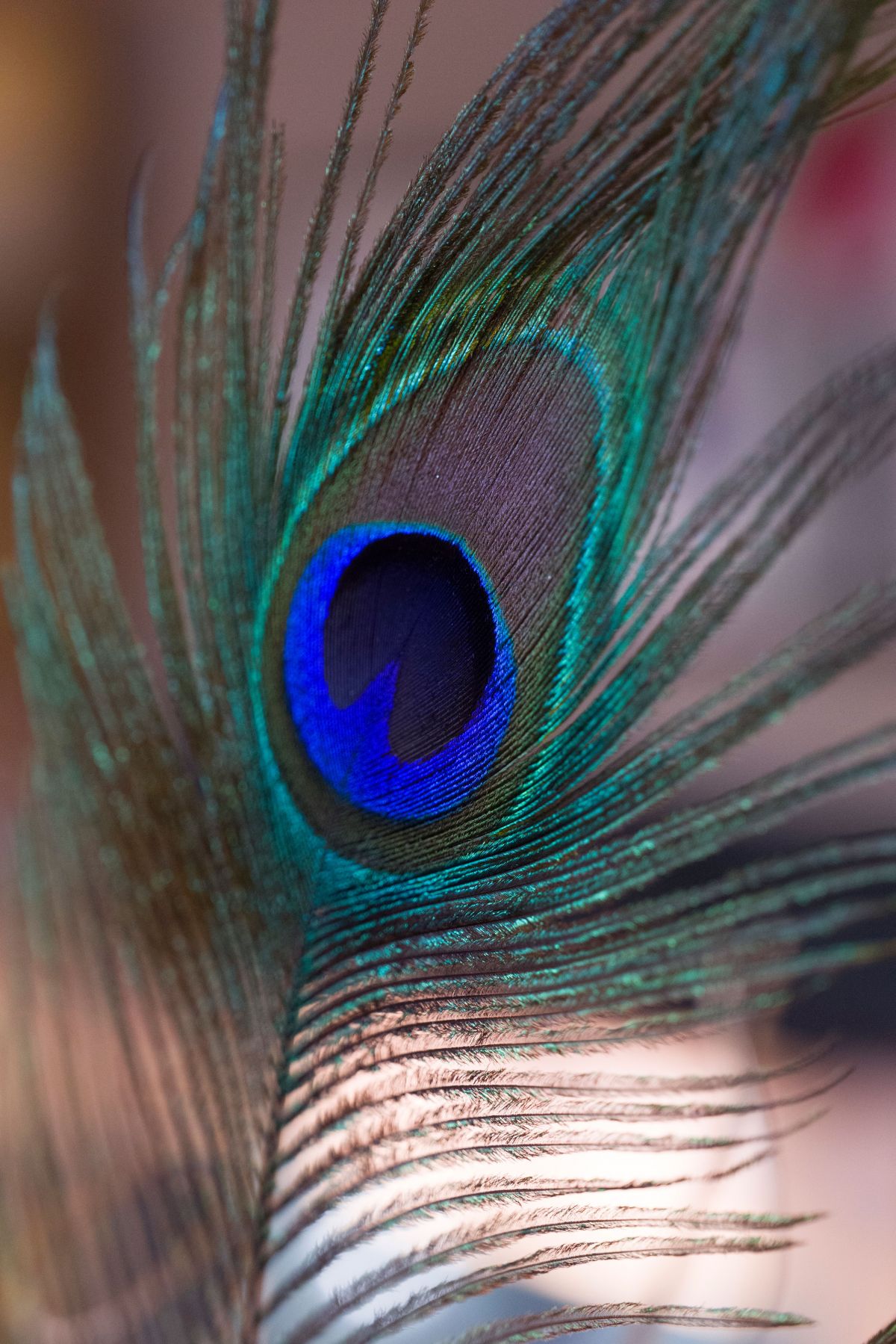
• The AF system struggled a little with this scene and focused a little further forward than I would like. Nevertheless the detail level is good in the sharp areas. Click here for a full size version.
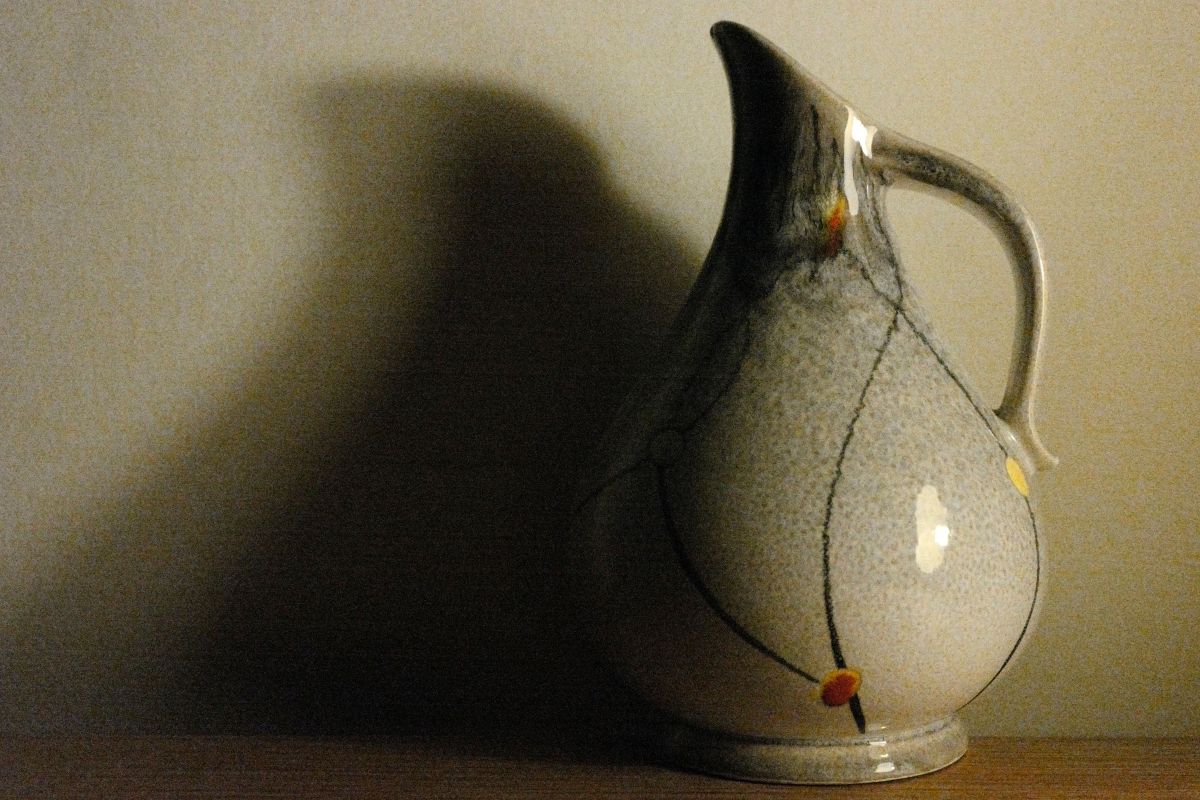
• There’s banding visible in the background of this ISO 50,000 image. Click here for a full size version.
One issue to be aware of is that some raw files shot at ISO 50,000 and ISO 40,000 exhibit a hint of banding in some darker areas. It’s not a major issue, but the banding becomes more visible if images are brightened post capture, so it’s something that you need to be aware of. In some cases the banding is visible in the viewfinder at the time of shooting.
The SL’s Multi-zone metering system is reliable and the exposure compensation facility isn’t required more often than I would expect. In addition, exposure is previewed in the viewfinder when the shutter release is half-pressed.

• Noise is controlled well in this ISO 25,600 shot. Click here for a full size version.
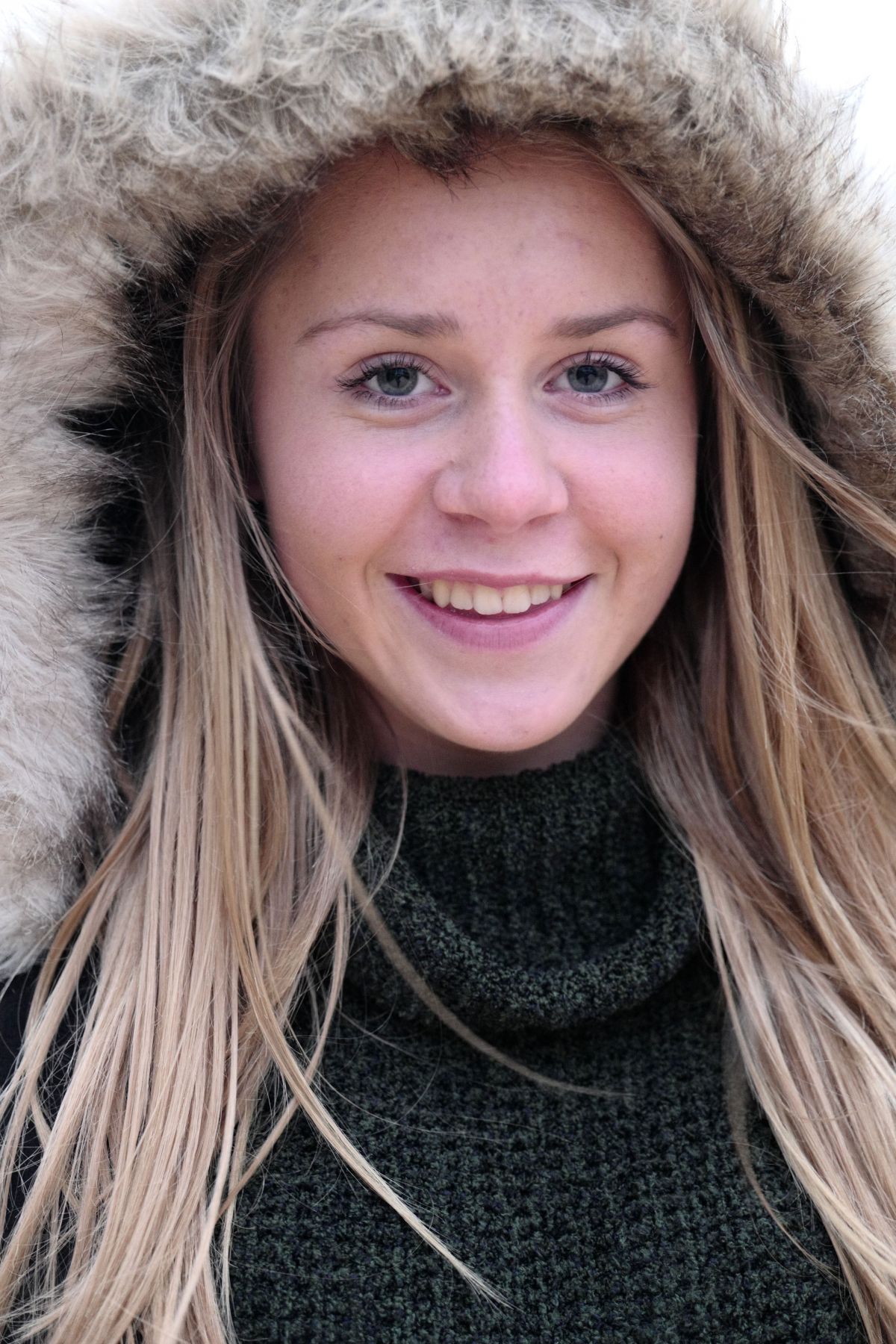
• Click here for a larger version.
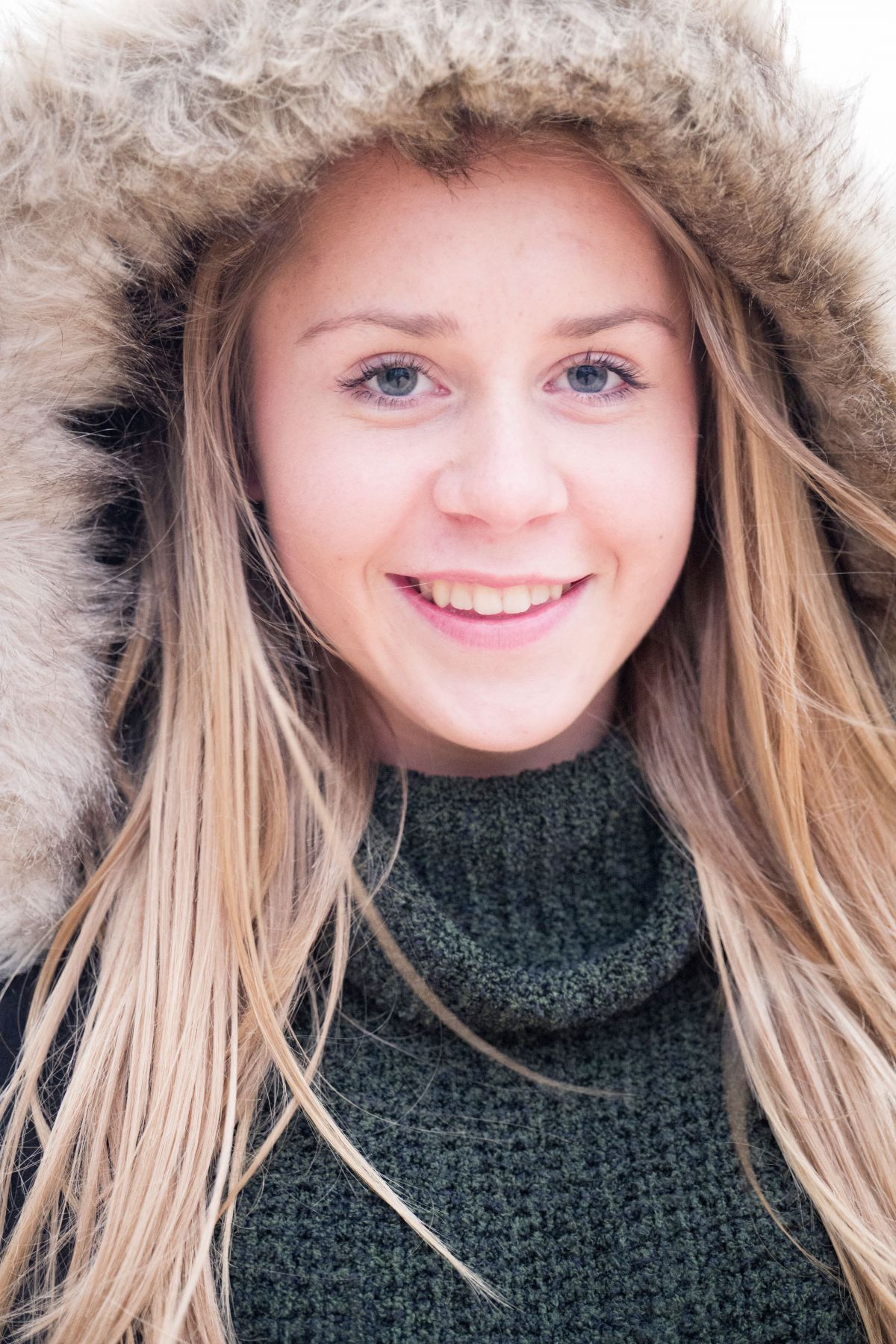
• While the auto white balance system has replicated the colours of the late afternoon overcast light well (top), the image looks better for a bit of brightening and warming (above). Click here for a larger version.
In the default settings, JPEG files have a pleasant level of contrast and saturation with colours being handled nicely, with subtle gradations in most natural lighting conditions when the auto white balance option is used.
Firmware version 1.2 has improved the results of using Gamma L-Log mode, so that although the video footage is flat, the scene is recognisable and it’s possible to focus. Version 1.0 was made far too light and was impossible to grade properly. When Gamma L-Log isn’t applied the camera produces very attractive footage with good tonal range, pleasant colours and good contrast.
Leica makes bold claims about the speed of the SL’s autofocus (AF) system and while it is fast in good light, it’s not up to the speed of an SLR like the Nikon D4S or Canon EOS-1DX in reflex mode (ie when the viewfinder is used to compose images). However, it is certainly faster than an SLR in live view mode and it compares well with that of many smaller format compact system cameras, being able to keep up with subjects moving at 30mph. It’s also pretty good for a contrast detection AF system in low light, but it can’t match a really good phase detection system. As usual, when shooting video the autofocus system can’t be relied upon in every situation to get the subject sharp smoothly and without hunting, so manual focusing remains the best option.
Lab tests: Resolution
We use and industry standard ISO test chart to measure resolution, shooting the chart at each major ISO increment and testing both raw and JPEG files.
We’ve compared the performance of the Leica SL against three main rivals:
Sony A7 II: This camera offers the same resolution sensor as the Leica SL but costs a good deal less.
Sony A7R II: The highest resolution Sony A7-series camera with 42.4 megapixels and 4K video capability.
Nikon D4S: Until we can get a Nikon D5 in for review, this is the top DSLR rival. The D4S has a lower resolution, however, and shoots 1080 video not 4K.

JPEG resolution analysis: Not surprisingly, the Sony A7R II is way ahead of the rest for resolution, but the Leica SL is in second place. What’s especially striking is the way it holds on to its resolution right the way through into the upper ISO ranges, easily beating the Nikon D4S and stretching away from the Sony A7 II at ISO 800 and beyond.
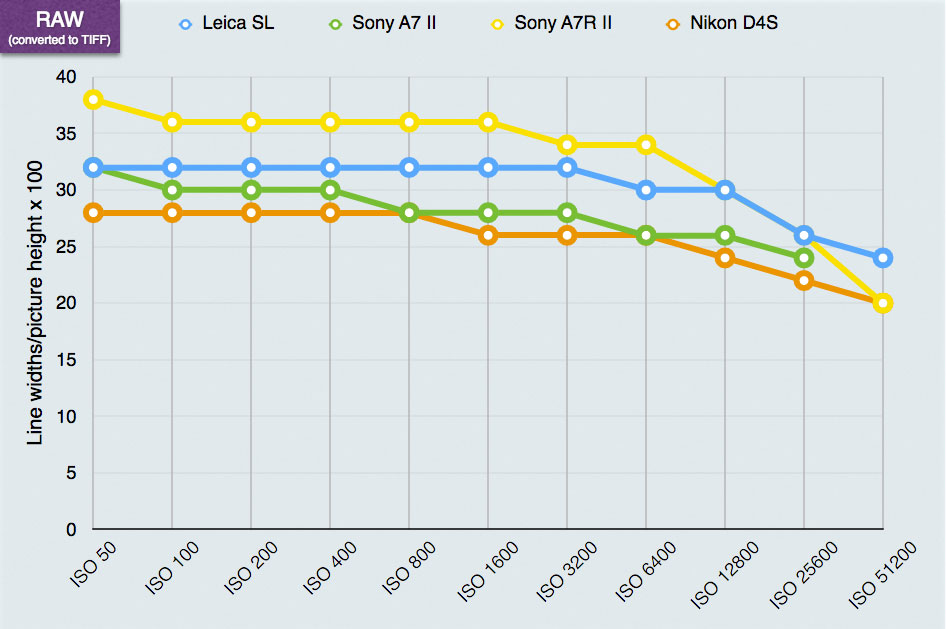
Raw resolution analysis: The result for raw files are closer. The 42.4MP Sony A7R II still has an advantage, but it’s much reduced and the Leica SL is not too far behind in second place, catching up with the A7R II at ISO 12,800.
Lab tests: Dynamic range
Dynamic range is a measure of the sensor’s ability to capture extremes of brightness. Dynamic range is measured in EV (exposure values), and the higher the dynamic range the better the camera will be at holding on to detail in extreme shadow and highlight areas.
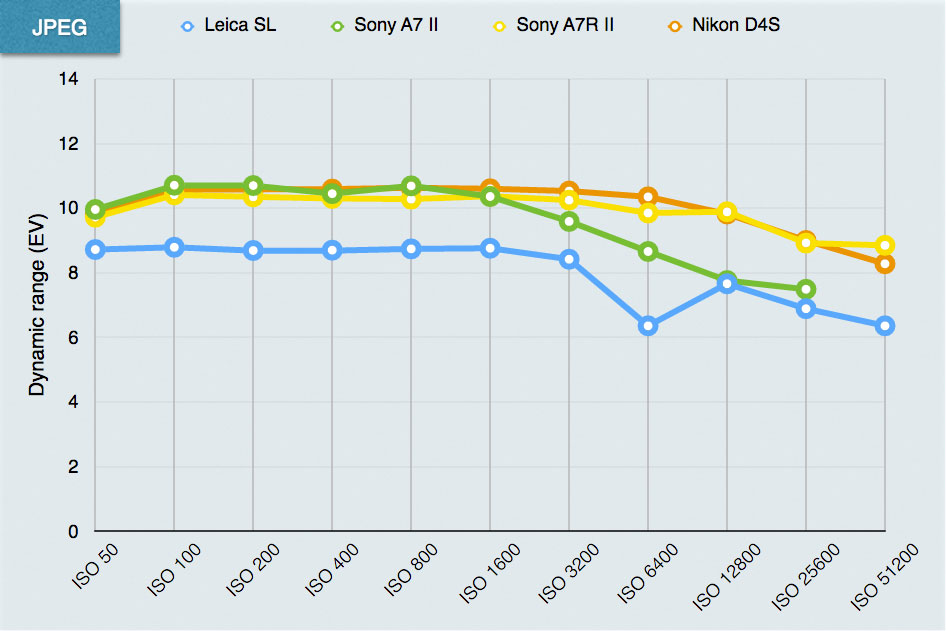
JPEG dynamic range analysis: Disappointingly, the Leica SL falls some way behind the rest, which are pretty close together up to ISO 3200. This is more of a reflection of the Leica’s JPEG image processing than the sensor’s capabilities.
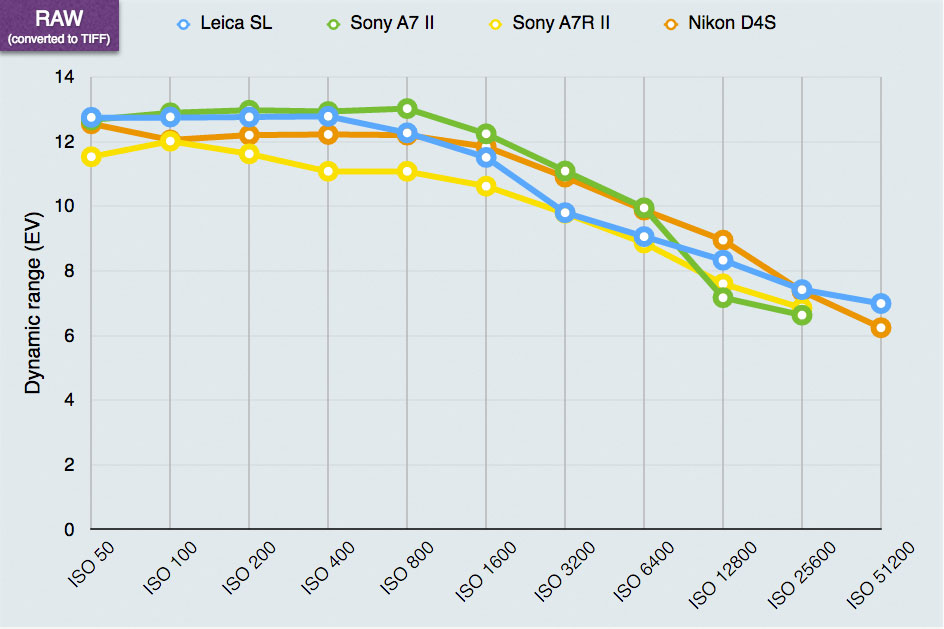
Raw dynamic range analysis: The results for raw files are much closer, and here the Leica SL is pretty much the equal of all its rivals. The Sony A7R II’s figures are slightly lower, which is likely to be due to its sensor’s higher resolution and hence smaller photosites.
Lab tests: Signal to noise ratio
Signal to noise ratio is a measure of the amount of random noise in the photo relative to real image data. The higher the signal to noise ratio the better – it means less noise will be visible.

JPEG signal to noise ratio: Interestingly, the Leica SL is one of the worst performers for noise in JPEG images, though studying real-world photos suggests this is a deliberate decision to limit any noise reduction and preserve fine detail.

Raw signal to noise ratio: The Leica SL’s raw files are still slightly noisier than those of the Sony A7 II and Nikon D4S, but the gap is much closer. The Sony A7R II comes in last, paying the price for its high resolution and hence smaller photosites.
Verdict
Leica is an integral part of the history of photography and although it has innovated with digital cameras like the Q, its full-frame compact camera, and the Monochrom that is specifically designed for shooting black and white images, it has a reputation for being rather stuffy and old-school. The SL puts the company right at the cutting edge of photography and makes it only the second company to have a full-frame compact system camera, with Sony being the first.
While the SL is more expensive than any of the Sony Alpha series it has a better specified viewfinder and is the first full-frame interchangeable lens camera to feature a touchscreen. The Sony Alpha 7R II, however, has almost twice as many pixels on its sensor so it can resolve a huge amount of detail. Sony’s current 24Mp model, the Alpha 7 II, is much less expensive than the SL.
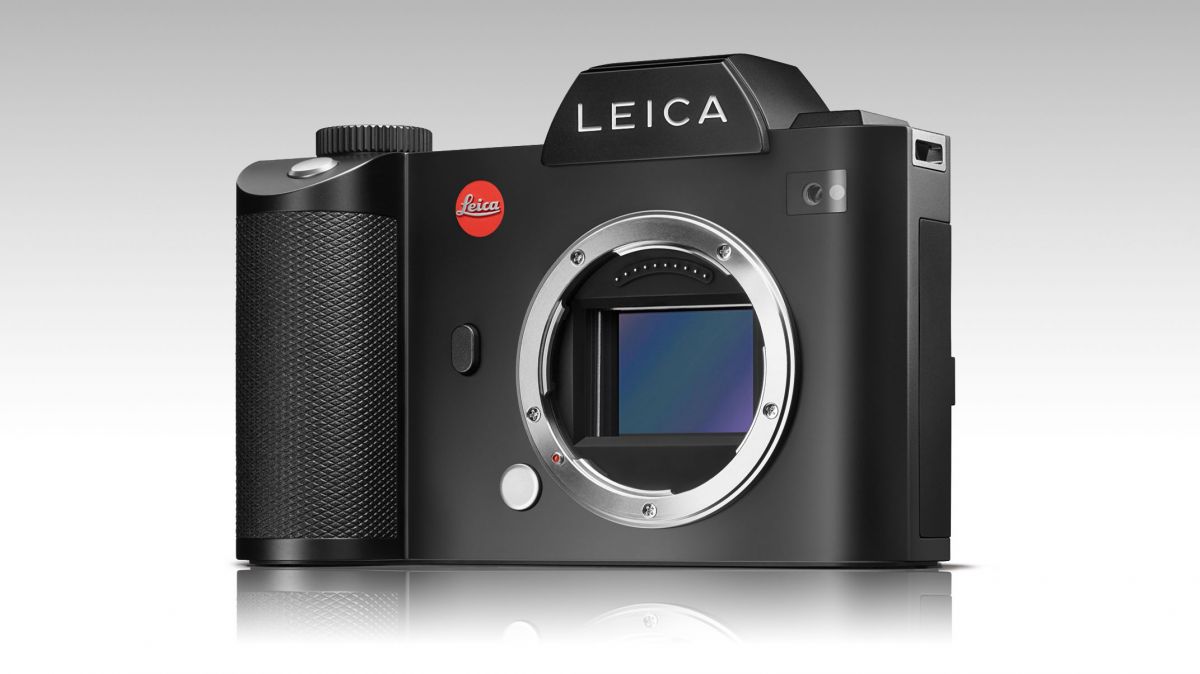
We liked
The Leica SL has some great examples of modern camera technology with a pretty snappy contrast detection autofocus system, a superb viewfinder, a high quality touch-screen and 4K video capability.
While the lack of labels can mean it takes a while to get used to the control arrangement, it’s quick and easy to find the main features and make adjustments. Pro photographers will also appreciate that the key menu features aren’t lost amongst a host of automatic options that are better suited to less experienced users.
We disliked
Our main issue with the SL is that it’s big, heavy and not very ergonomically shaped. And while the price is high, it’s not out of step with the cameras that Leica is pitching it against, the Canon 1-Dx and Nikon D4s – nevertheless, it doesn’t really compete with them as the focusing system isn’t in the same league and there’s banding in the darker areas of ISO 40,000 and 50,000 images.
Verdict
The SL feels like a very solid piece of kit and its interface is well thought out (provided that you don’t swap between cameras on a regular basis), but it’s bigger and heavier than the Sony Alpha 7 series and less ergonomically shaped than than a professional-level SLR from Canon or Nikon. It’s also disappointing that the first lens in the full-frame L mount is so bulky. We’ve become used to Leica producing very compact, very high quality lenses and while the M-mount optics are manual focus only, after the compact size of the lens on the Q, I was hoping that Leica might keep the SL’s optics small. That said, the quality of the results from the SL looks very good – apart from the concern about banding at ISO 50,000.
The SL is aimed squarely at professionals and Leica enthusiasts. Some of the latter may be shocked by the modern features with the company’s latest camera, while others will love them and appreciate the step forward that has been made, not just for Leica but for photography.
Source: techradar.com









